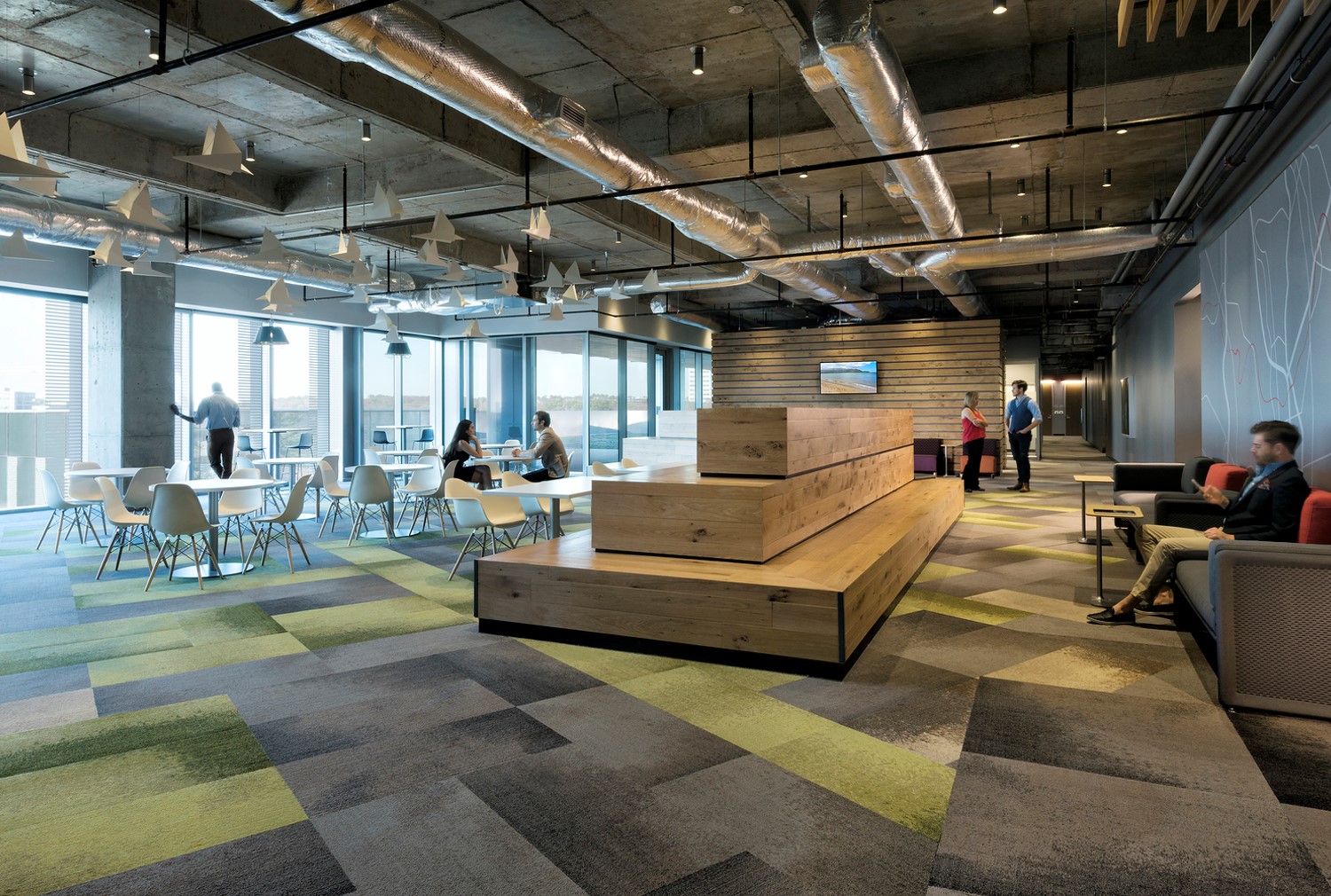Many news stories proclaim that the end of office is near. Cooper Carry believes offices have a solid and promising future. They will certainly be transformed and improved in reaction to lessons learned from the pandemic. From our own post COVID office design experience and that of many clients and colleagues with whom we work, most are finding that remote home offices are a great place for “heads down” productivity, but when it comes to creativity and collaboration nothing beats being together.
The office will still play several key organizational roles, including:
- Serving as the cultural touchstone of any organization, and demonstrating a firm’s brand and values.
- Helping staff develop relationships with one another that build trust and enhance teamwork.
- Providing expertly and thoughtfully designed spaces that are environments for creativity and innovation.
Here are four types of spaces our Interior Design Studio expects to see more of in post-COVID office design:
Maker Spaces: Where Employees Tinker and Invent
Maker spaces encourage experimentation and exploration of new solutions to problems. These are places where people make things; doing in addition to thinking spaces. The more opportunity for hands-on creation, the better.


Casual Collaboration Spaces: Where Serendipitous Encounters are Fuel for Ideas
People going to and from meetings, finding different environments to work for a bit — these moments break down silos and facilitate unexpected collaboration resulting in creative solutions to problems. There’s nothing happenstance about the unplanned conversations; these spaces are designed purposefully so such collisions will occur.



Town Hall Spaces: Where Everyone Comes Together
All-hands meetings are important for nurturing organizational culture and employee engagement. They ensure everyone hears the same message around the goals and aspirations of the company. It’s important to bring everyone together when most of the time they’re scattered across hybrid schedules. Town hall spaces should be comfortable and make everyone in the room feel as if they’re on the same footing.



Project Rooms : Where Specific Projects Get Tackled
Project “war rooms” should provide opportunities for people to cover the walls with anything related to a project. Tape, pushpins, mood boards and writing on glass or walls should be encouraged. Whatever it takes to think through options and make the best choices, with plenty of opportunity for visual collaboration. Anyone coming into the project room should be able to get a sense of what’s been going on, no matter what day they’re in the office.


Visit the Cooper Carry Interior Design studio for more on our expertise in post COVID office design.
